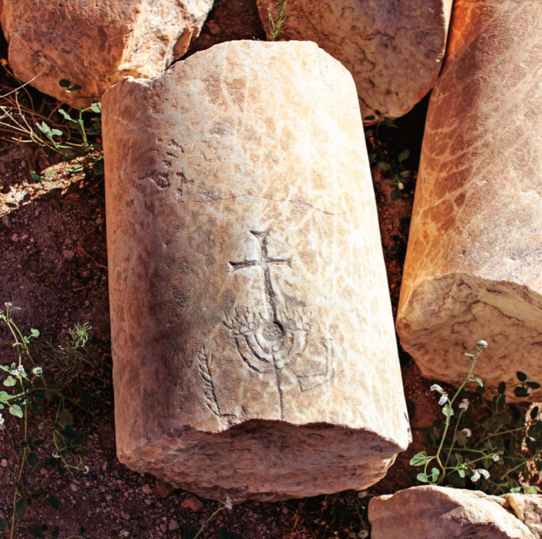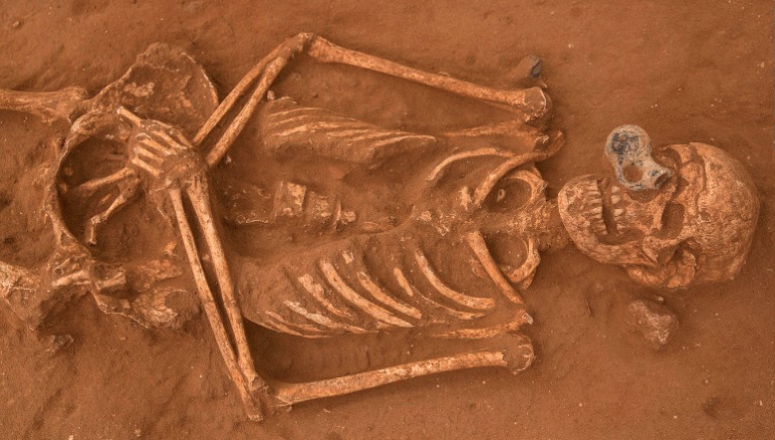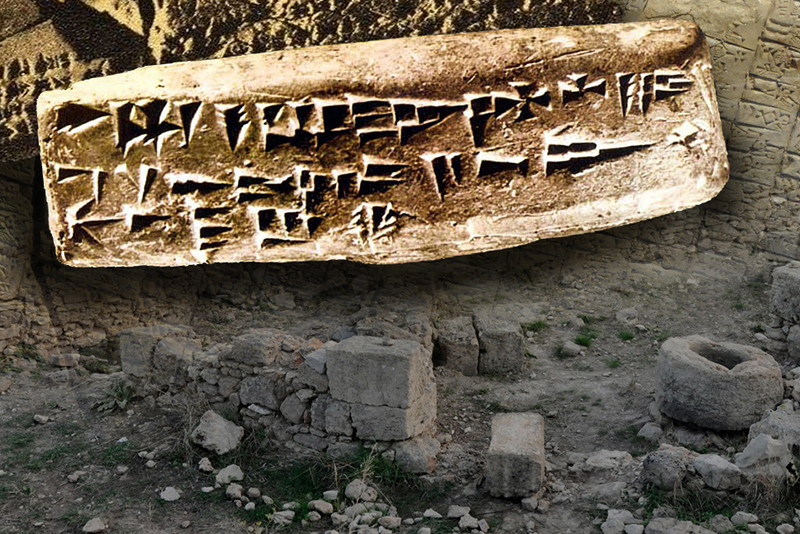
What does biblical archaeology do? What new findings have its practitioners made in the last several years? How are they related to Biblical narratives? We put these questions to Sergey Kovach, an instructor at the Kiev Religious Academy and a candidate of theology.
- The secret Christian church of Laodicea
Laodicea, an ancient city located in the territory of modern Turkey, is mentioned in Apostle Paul’s epistle to the Colossians (2:1, 4:16), and also in the Revelation of John the Theologian (Revelation 3:14). However, until recently, there was no archaeological evidence that a Christian church might have existed in Laodicea during the Apostolic times in the years 30 – 80 AD. An archaeological excavation that lasted from 2003 under the leadership of the Turkish archaeologist Jelal Simsek, discovered a secret temple that the first Christians presumably used in the first century.

Previously, Professor Simsek’s team had discovered in Laodicea the remains of another Christian church built in the first half of the fourth century or later, possibly during the reign of Constantine who ended the persecution of Christians in the empire. The first-century church was located in a private house of twenty rooms that belonged to a wealthy family of Laodiceans and was located next to the theatre. It was essentially an improvised prayer room in the Eastern part of the house for women Christians (the prayer room for men was found in its Western part). In all probability, the prayers were held in secret. Although mass persecutions of Christians had not yet started, Christians were getting hostile treatment from the local Hebrews (several Hebrew communities were active in the city), and also from the Pagans.
The use of residential rooms as churches had implications for their design – its front wall faced the North, not the East.

Jelal Simsek also found in Laodicea a fragment of an Ancient column depicting the Hebrew Menorah, a seven-branched candlestick of the late Roman period, with a Christian cross at the top. This gave the scholars reason to presume that the Laodicean church grew out of a Jewish synagogue. The main effect of these findings was to produce solid geographical evidence in support of the biblical accounts of Apostle Paul’s discourses in synagogues across Asia Minor.
- Interpreting the meaning of one of the earliest historical references to the Jews
In several places across the Bible, we find mentions of Moav, a state in the territory of modern Jordan that was hostile to the Jews. Its reality has not been in dispute among scholars since the finding of Mesha’s Stele in the 19th century. – The citizens of Moav spoke almost the same language as the Biblical Jews, but discoveries of their writings have been very rare among archaeologists. Each discovery gives has given them a new perspective of the biblical text.
The inscription on the altar of the Moabites dating back to the 9th – 8th century BC is one of these valuable findings. The altar was discovered found near the village of Hirbat-Ataruz in Jordan in 2010, and its inscription was not read until recently. – The text narrates, among other things, the story of the capture by the Moabites from the Jews (called Ibrin) of 64 shekels (about 1 kilogram) of bronze during the assault of the Jewish city of Atarot (Ataruz). The term Ibrin, which has a derogatory connotation, is one of the few known references to the Jews in a non-Scriptural source. The Philistine Goliath used the same term to refer to the Jews in the text of the Bible’s first book of kings (17:8) three hundred years before the inscription on the Stele.

In the context of biblical history, the Moabite inscription is illustrative of the range of meanings attributed to the term by which the Jews were referred at different times, from a derogative name to a neutral term which the Jews eventually came to use to refer to themselves. While the Moabites spoke about the Jews in a derogatory manner, the prophet biblical Jonah, a contemporary of the Ataruz inscription (who lived in the 9th – 8th centuries BC), calls himself a Jew (עברי) only to indicate his ethnic origin (Jonah 1:8–9). To summarise, in the 9th – 8th century BC the term “Jew” was used in the Israelite and Jewish Kingdoms and in the neighbouring states to refer to Jewishness in a derogatory and neutral way. Eventually, the term ‘Jew” lost its derogative meaning
- Determining the origins of the Philistines
Similar to the Moabites, the historical existence of the Philistines is not doubted by scholars. However, until recently, several theories existed on the origins of the Philistines, and all relied on nothing more than indirect evidence. For a long time, Archaeologists were convinced that the Philistines were not indigenous to Palestine and had settled there in the 13th – 14th centuries BC as a result of the mass migration of the peoples of the Aegean Basin and Asia Minor in the Bronze Age. – Recently, however, scholars had performed DNA sequencing of the remains found in a burial site off Ashkelon, one of the five major cities of the Philistines. The remains date back to the 12th century BC. Because this dating is consistent with the Bronze age migration, scholars could come to a definitive conclusion about the origins of the Philistines.

The sequencing revealed that the DNA from the remains were almost identical to the DNA of those in the populations of Greece, Spain and Sardinia during the Iron Age (9th – 7th centuries BC to 1st century AD). – These territories are mentioned among others in the Egyptian artefacts of the Palaeolithic age describing the arrival of the “peoples of the sea” in the 13th – 12th centuries BC. Remarkably, several centuries after they came to Canaan (the name of the territory before the arrival of the Jews under the command of Joshua), the Philistines fully assimilated with its indigenous residents, and later DNA sequencing data to not contain the DNA traces found in the “peoples of the seas”.
Translated by The Catalogue of Good Deeds
Source: https://foma.ru/pjat-vazhnyh-nahodok-sovremennyh-arheologov-svjazannyh-s-bibliej.html




